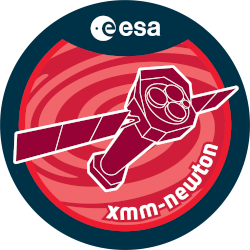

| Proposal ID | 030599 |
| Title | Study of X-ray Weakness among Luminous Narrow-line Quasars |
| Download Data Associated to the proposal | https://nxsa.esac.esa.int/nxsa-sl/servlet/data-action-aio?obsno=0305990101 |
| DOI | https://doi.org/10.5270/esa-87dnqyr |
| Principal Investigator, PI | Dr Chiho Matsumoto |
| Abstract | The unusual properties of Narrow-line Seyfert 1 galaxies (NLS1s) are thought toresult from a higher accretion rate relative to Eddington than broad-lineSeyferts. Luminous NLS1s should have the highest accretion rates of all. Withour recent study, several X-ray weak objects were found, and it is suggestedthat X-ray weakness may occur more frequently among more luminous regime. Toinvestigate the nature of X-ray weak objects, we propose short observations offour optically-luminous X-ray--weak NLS1s with XMM-Newton. |
| Publications |
|
| Instrument | EMOS1, EMOS2, EPN, OM, RGS1, RGS2 |
| Temporal Coverage | 2006-04-18T11:53:49Z/2006-04-18T15:39:03Z |
| Version | 17.56_20190403_1200 |
| Mission Description | The European Space Agencys (ESA) X-ray Multi-Mirror Mission (XMM-Newton) was launched by an Ariane 504 on December 10th 1999. XMM-Newton is ESAs second cornerstone of the Horizon 2000 Science Programme. It carries 3 high throughput X-ray telescopes with an unprecedented effective area, and an optical monitor, the first flown on a X-ray observatory. The large collecting area and ability to make long uninterrupted exposures provide highly sensitive observations. Since Earths atmosphere blocks out all X-rays, only a telescope in space can detect and study celestial X-ray sources. The XMM-Newton mission is helping scientists to solve a number of cosmic mysteries, ranging from the enigmatic black holes to the origins of the Universe itself. Observing time on XMM-Newton is being made available to the scientific community, applying for observational periods on a competitive basis. |
| Creator Contact | https://www.cosmos.esa.int/web/xmm-newton/xmm-newton-helpdesk |
| Date Published | 2007-05-19T00:00:00Z |
| Last Update | 2025-08-04 |
| Keywords | "XMM", "XMM-Newton", "luminous regime", "accretion rates", "xray weak objects", "broad line seyferts", "galaxy nls1s", "xmm newton", "luminous nls1s", "narrow line seyfert", "xray weakness", "accretion rate relative" |
| Publisher And Registrant | European Space Agency |
| Credit Guidelines | European Space Agency, Dr Chiho Matsumoto, 2007, 'Study of X-ray Weakness among Luminous Narrow-line Quasars', 17.56_20190403_1200, European Space Agency, https://doi.org/10.5270/esa-87dnqyr |